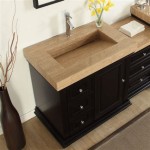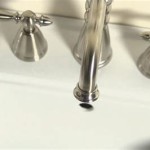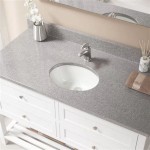How to Install Sheet Vinyl Flooring in a Bathroom
Sheet vinyl flooring is a popular choice for bathrooms because of its waterproof, durable, and easy-to-clean nature. It comes in a variety of styles and colors to match any bathroom decor. Installing sheet vinyl flooring in a bathroom is a relatively straightforward process, even for DIY beginners, with the proper tools and materials. This article will guide you step-by-step through the process, offering tips and advice to achieve a professional-looking finish.
Prepare the Subfloor
A smooth and even subfloor is essential for a successful sheet vinyl installation. This will ensure a flat surface and prevent the flooring from buckling or warping over time. The first step is to remove any existing flooring, including tiles, carpet, or wood. Then, inspect the subfloor for any damage, such as cracks, gaps, or unevenness. Repair any damage with patching compound or wood filler.
If necessary, the subfloor may need leveling. This can be achieved using a self-leveling compound. Follow the manufacturer's instructions when applying the compound, ensuring it is spread evenly across the entire surface. After the compound dries, sand it smooth with a fine-grit sandpaper to create a uniform surface for the sheet vinyl.
Measure and Cut the Sheet Vinyl
Once the subfloor is prepared, you can measure and cut the sheet vinyl to fit the bathroom space. Start by measuring the length and width of the bathroom floor. Add an extra 1/2 inch to each dimension to allow for trimming around the edges. Remember to account for any existing fixtures, like toilets or showers.
Use a utility knife with a sharp blade to cut the sheet vinyl. Measure carefully and mark the cutting lines on the back of the material using a pencil. When cutting, place a straight edge along the marked line and draw the knife slowly and firmly across the vinyl. Ensure you cut through the entire sheet vinyl, which may require multiple passes.
Install the Sheet Vinyl
With the sheet vinyl cut to size, you can begin the installation process. Depending on the type of sheet vinyl chosen, there are two primary methods: adhesive-backed and loose-lay.
Adhesive-Backed Sheet Vinyl
Adhesive-backed sheet vinyl comes with a peel-and-stick adhesive backing. Begin by removing the protective paper from a small portion of the adhesive backing. Align the sheet vinyl with the desired starting point on the subfloor, being careful not to stretch or distort the material. Slowly peel back the protective paper as you press the sheet vinyl into place. If needed, use a roller to ensure the sheet vinyl is securely adhered to the subfloor.
As you work, use a utility knife to carefully trim the edges of the sheet vinyl to fit around fixtures and walls. Use a level to ensure all edges are flush with the walls, creating a smooth and professional look.
Loose-Lay Sheet Vinyl
Loose-lay sheet vinyl does not come with an adhesive backing and is installed on a subfloor typically prepared for this purpose. The flooring is held in place by its weight and friction against the subfloor. It can also be secured with a perimeter adhesive or sealant to create a more permanent installation.
Follow the manufacturer's guidelines for installation specific to your chosen loose-lay sheet vinyl. It may require a specialized underlayment to further ensure a smooth and secure installation.
Finalize the Installation
Once the sheet vinyl is installed, you can add finishing touches. Baseboards can be installed along the edges of the sheet vinyl, hiding any gaps or imperfections. Ensure they are properly secured to the walls using nails or adhesives.
Finally, use a sealant around the edges of the sheet vinyl and where it meets fixtures like toilets, showers, and bathtubs. The sealant will help to prevent water from seeping beneath the flooring, preventing damage and mold growth. Allow the sealant to dry completely before using the bathroom.
Additional Tips
Here are some additional tips for a successful sheet vinyl installation:
- Work in a well-ventilated area with proper lighting to ensure accurate measuring and cutting.
- Wear safety glasses and gloves to protect yourself from dust and debris.
- Use a straight edge and sharp utility knife for precise cutting.
- Allow the sheet vinyl to acclimate to the room temperature for at least 24 hours before installation.
- Refer to the manufacturer's instructions for your specific sheet vinyl type, as installation methods and requirements may vary.
By following these steps and tips, you can successfully install sheet vinyl flooring in your bathroom, creating a beautiful and durable finish that will last for years to come.

How To Install Sheet Vinyl Floor Decor Adventures

How To Install Vinyl Sheet Flooring A Erfly House

How To Install Sheet Vinyl Floor Decor Adventures

How To Install Vinyl Sheet Flooring A Erfly House

How To Install Sheet Vinyl Floor Decor Adventures

How To Install Vinyl Sheet Flooring A Erfly House

Bathroom Flooring Linoleum To Luxury Sheet Vinyl Dear Shari

How To Lay Vinyl Floor In A Bathroom Dove Cottage

How To Install Sheet Vinyl Floor Decor Adventures

Vinyl Sheet Floor Installation
Related Posts







